Agenda Corporate Social Responsibility Corporate Social







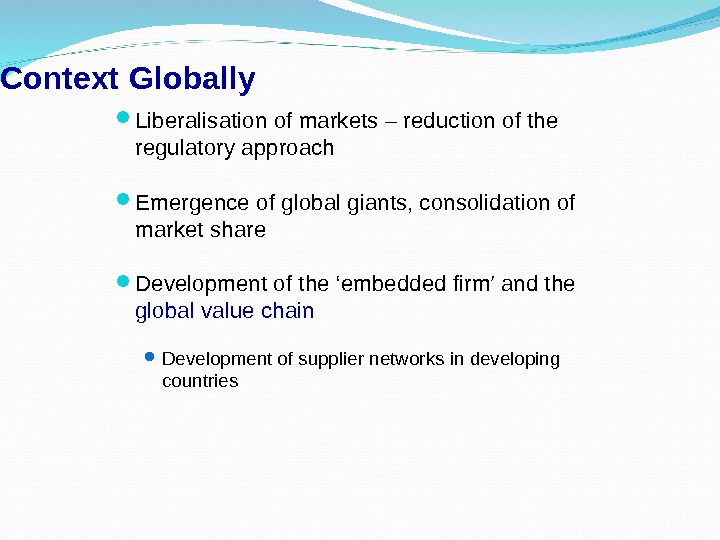




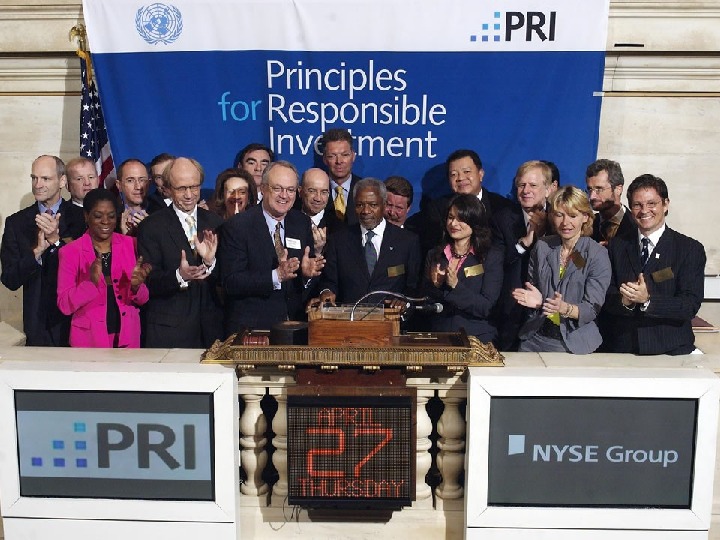
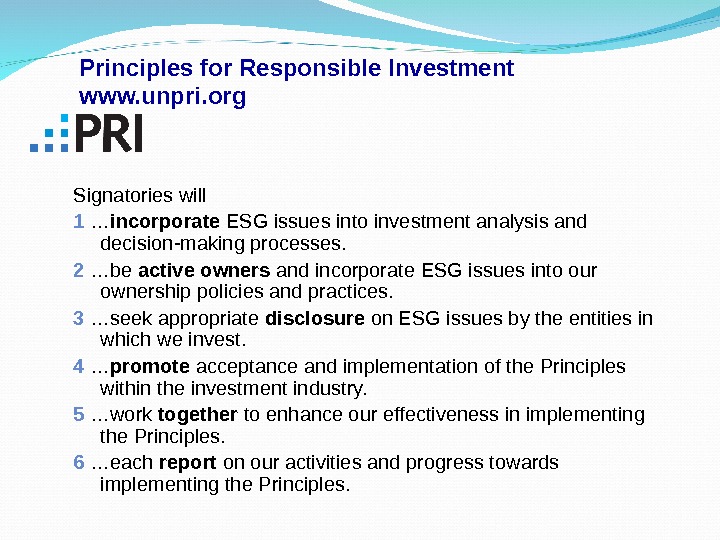



























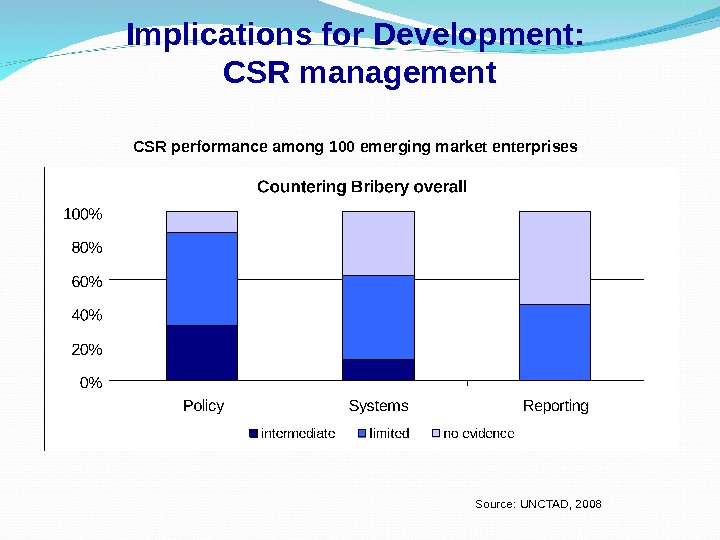






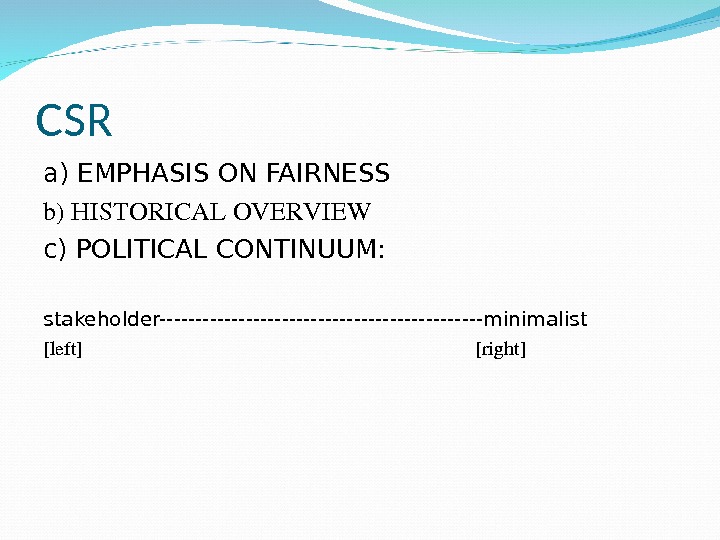
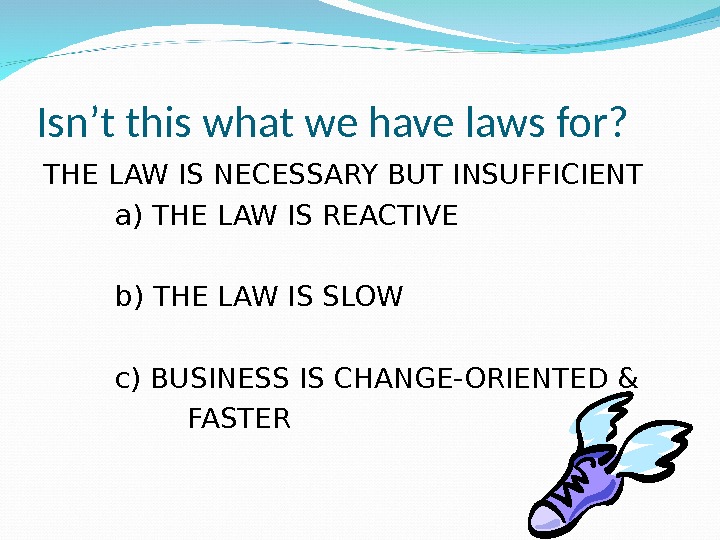














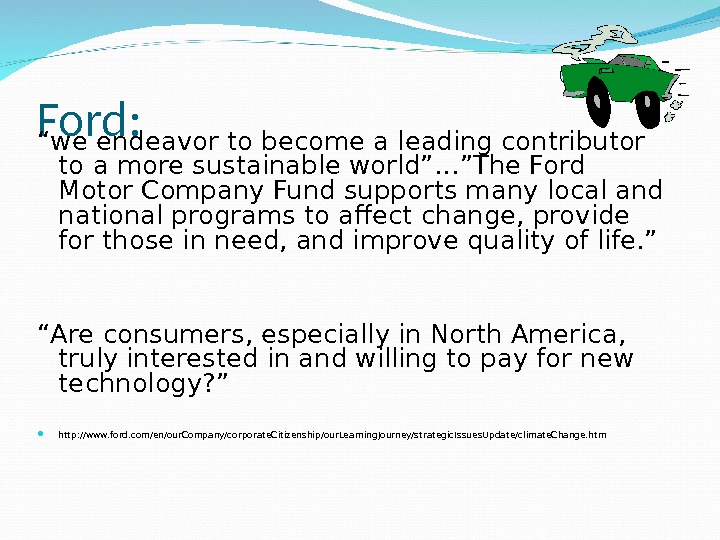










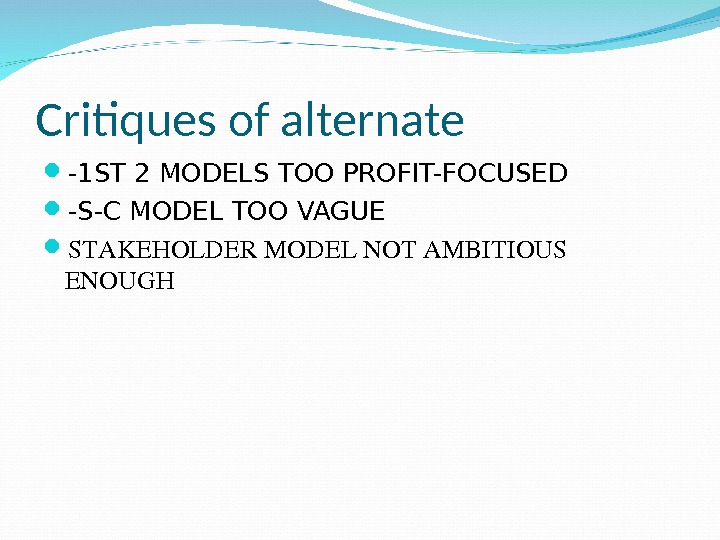









































lecture_14_corporate_social_responsibility.ppt
- Размер: 4.2 Mегабайта
- Количество слайдов: 116
Описание презентации Agenda Corporate Social Responsibility Corporate Social по слайдам

 Agenda Corporate Social Responsibility
Agenda Corporate Social Responsibility
 Corporate Social Responsibility • Concepts, key issues, context • Key CSR drivers • Implications for enterprise • Implications for development Dr. Anthony Miller United Nations Conference on Trade and Development anthony. miller@unctad. org
Corporate Social Responsibility • Concepts, key issues, context • Key CSR drivers • Implications for enterprise • Implications for development Dr. Anthony Miller United Nations Conference on Trade and Development anthony. miller@unctad. org
 Main Concepts of CSR Social Contract (Donaldson, 1982; Donaldson and Dunfee, 1999) – There is a tacit social contract between the firm and society; the contract bestows certain rights in exchange for certain responsibilities. Stakeholder Theory (Freeman, 1984) – A stakeholder is “any group or individual who can affect or is affected by the achievement of an organisation’s purpose. ” Argues that it is in the company’s strategic interest to respect the interests of all its stakeholders. CSR (Carrol, 1979) Firms have responsibilities to societies including economic, legal, ethical and discretionary (or philanthropic). — See also De. George (1999) on the “Myth of the Amoral Firm”
Main Concepts of CSR Social Contract (Donaldson, 1982; Donaldson and Dunfee, 1999) – There is a tacit social contract between the firm and society; the contract bestows certain rights in exchange for certain responsibilities. Stakeholder Theory (Freeman, 1984) – A stakeholder is “any group or individual who can affect or is affected by the achievement of an organisation’s purpose. ” Argues that it is in the company’s strategic interest to respect the interests of all its stakeholders. CSR (Carrol, 1979) Firms have responsibilities to societies including economic, legal, ethical and discretionary (or philanthropic). — See also De. George (1999) on the “Myth of the Amoral Firm”
 Main Concepts of CSR = political economy The rights and responsibilities assigned to private industry.
Main Concepts of CSR = political economy The rights and responsibilities assigned to private industry.
 Key Issues in CSR Labour rights : child labour forced labour right to organise safety and health Environmental conditions water & air emissions climate change Human rights cooperation with paramilitary forces complicity in extra-judicial killings Poverty Alleviation job creation public revenues skills and technology
Key Issues in CSR Labour rights : child labour forced labour right to organise safety and health Environmental conditions water & air emissions climate change Human rights cooperation with paramilitary forces complicity in extra-judicial killings Poverty Alleviation job creation public revenues skills and technology
 Context Globally Liberalisation of markets – reduction of the regulatory approach Emergence of global giants, consolidation of market share Development of the ‘embedded firm’ and the global value chain Development of supplier networks in developing countries
Context Globally Liberalisation of markets – reduction of the regulatory approach Emergence of global giants, consolidation of market share Development of the ‘embedded firm’ and the global value chain Development of supplier networks in developing countries
 Key drivers of CSR Around the world • NGO Activism • Responsible investment • Litigation • Gov & IGO initiatives Developing Countries • Foreign customers • Domestic consumers • FDI • Government & IGO
Key drivers of CSR Around the world • NGO Activism • Responsible investment • Litigation • Gov & IGO initiatives Developing Countries • Foreign customers • Domestic consumers • FDI • Government & IGO
 Key Drivers: NGO Activism Facilitators: IT (esp Internet), media, low cost travel Boycotts, brand damage, influence legislation, domino effect e. g. Shell in Nigeria, Exxon in Cameroon, Sinopec in Sudan, Apparel Industry (Nike, Gap), GMO, Wood Products, etc.
Key Drivers: NGO Activism Facilitators: IT (esp Internet), media, low cost travel Boycotts, brand damage, influence legislation, domino effect e. g. Shell in Nigeria, Exxon in Cameroon, Sinopec in Sudan, Apparel Industry (Nike, Gap), GMO, Wood Products, etc.
 Domino Effect in the US Wood Products Industry: 7 out of top 10 shift policy on old growth within 18 months Date of Policy Shift Company Industry Rank Aug — 1999 Home Depot 1 Nov — 1999 Home Base 6 Nov — 1999 Wickes 9 Jan — 2000 Menards 3 Aug — 2000 Lowes 2 Aug — 2000 84 Lumber 4 Dec — 2000 Payless Cashways
Domino Effect in the US Wood Products Industry: 7 out of top 10 shift policy on old growth within 18 months Date of Policy Shift Company Industry Rank Aug — 1999 Home Depot 1 Nov — 1999 Home Base 6 Nov — 1999 Wickes 9 Jan — 2000 Menards 3 Aug — 2000 Lowes 2 Aug — 2000 84 Lumber 4 Dec — 2000 Payless Cashways
 Key Drivers: Responsible Investment Roots of: South Africa Apartheid Divestment Significant size: US SRI = 2. 3 trillion $ in 2005 or 10% of all professionally managed investments Shareholder activism: shareholder resolutions; voting process Influence corporate reporting and disclosure requirements New rules on CSR reporting
Key Drivers: Responsible Investment Roots of: South Africa Apartheid Divestment Significant size: US SRI = 2. 3 trillion $ in 2005 or 10% of all professionally managed investments Shareholder activism: shareholder resolutions; voting process Influence corporate reporting and disclosure requirements New rules on CSR reporting

 Signatories will 1 … incorporate ESG issues into investment analysis and decision-making processes. 2 …be active owners and incorporate ESG issues into our ownership policies and practices. 3 …seek appropriate disclosure on ESG issues by the entities in which we invest. 4 … promote acceptance and implementation of the Principles within the investment industry. 5 …work together to enhance our effectiveness in implementing the Principles. 6 …each report on our activities and progress towards implementing the Principles for Responsible Investment www. unpri. org
Signatories will 1 … incorporate ESG issues into investment analysis and decision-making processes. 2 …be active owners and incorporate ESG issues into our ownership policies and practices. 3 …seek appropriate disclosure on ESG issues by the entities in which we invest. 4 … promote acceptance and implementation of the Principles within the investment industry. 5 …work together to enhance our effectiveness in implementing the Principles. 6 …each report on our activities and progress towards implementing the Principles for Responsible Investment www. unpri. org
 Asset owners. Do you expect to implement ESG policies in your emerging market investments? Investor opinion survey (IFC)
Asset owners. Do you expect to implement ESG policies in your emerging market investments? Investor opinion survey (IFC)
 Foreign Direct Liability Alien Tort Claims Act (ATCA): human rights, environmental rights o Unocal Burma o Coca-Cola Columbia o Rio Tinto Papau New Guinea o Del Monte Guatemala o The Gap Saipan o Shell Nigeria Other tools: RICO, False Advertising E. g. Saipan ‘sweatshop’ cases; Katsky v. Nike Key Drivers: Litigation $30, 000 settlement
Foreign Direct Liability Alien Tort Claims Act (ATCA): human rights, environmental rights o Unocal Burma o Coca-Cola Columbia o Rio Tinto Papau New Guinea o Del Monte Guatemala o The Gap Saipan o Shell Nigeria Other tools: RICO, False Advertising E. g. Saipan ‘sweatshop’ cases; Katsky v. Nike Key Drivers: Litigation $30, 000 settlement
 United Nations Initiatives UN Global Compact UN Principles for Responsible Investment UNEP Equator Principles ILO Tripartite Declaration of Principles concerning Multinational Enterprises and Social Policy (MNE Declaration) UNHCHR Business and Human Rights UNODC Anti-corruption UNCTAD Corporate Responsibility Reporting, World Investment Report
United Nations Initiatives UN Global Compact UN Principles for Responsible Investment UNEP Equator Principles ILO Tripartite Declaration of Principles concerning Multinational Enterprises and Social Policy (MNE Declaration) UNHCHR Business and Human Rights UNODC Anti-corruption UNCTAD Corporate Responsibility Reporting, World Investment Report
 Implications for Enterprises The Extended Firm Regional Plants / JV Partners Suppliers / Distributors New social and product liability patterns Development of Codes of Conduct and CSR reporting Expanding sphere of influence Application of Code of Conduct to value chain CSR management: value chain management = compliance management CSR Drivers Transnational Corporations
Implications for Enterprises The Extended Firm Regional Plants / JV Partners Suppliers / Distributors New social and product liability patterns Development of Codes of Conduct and CSR reporting Expanding sphere of influence Application of Code of Conduct to value chain CSR management: value chain management = compliance management CSR Drivers Transnational Corporations
 Implications for Enterprises: TNC as an “organ of society” “ every individual and every organ of society [should] promote respect for these rights and freedoms and to secure their universal and effective recognition. ” — UN International Declaration of Human Rights International principles apply only to governments International principles apply to governments and companies. It would be a strange tort system that imposed liability on state actors but not on those who conspired with them to perpetrate illegal acts through coercive use of state power. — 1997 Eastman Kodack Co. v. Kalvin Trend in international law
Implications for Enterprises: TNC as an “organ of society” “ every individual and every organ of society [should] promote respect for these rights and freedoms and to secure their universal and effective recognition. ” — UN International Declaration of Human Rights International principles apply only to governments International principles apply to governments and companies. It would be a strange tort system that imposed liability on state actors but not on those who conspired with them to perpetrate illegal acts through coercive use of state power. — 1997 Eastman Kodack Co. v. Kalvin Trend in international law
 Implications for Enterprises: CSR Management How do companies address socio-environmental & legal compliance issues? • Policies — Code of Conduct • Systems — Compliance Management • Reporting — Accounting and Reporting
Implications for Enterprises: CSR Management How do companies address socio-environmental & legal compliance issues? • Policies — Code of Conduct • Systems — Compliance Management • Reporting — Accounting and Reporting
 CSR Management: Systems approach Sustainable business development does not come about of its own accord. Rather, commitment to sustainability demands that corporate processes be reliably controlled and that everyone’s actions — in finance as much as in environmental and social areas — be coordinated. Prerequisites for this are binding guidelines, unambiguous corporate goals and a clear organizational structure. — Deutsche Telekom
CSR Management: Systems approach Sustainable business development does not come about of its own accord. Rather, commitment to sustainability demands that corporate processes be reliably controlled and that everyone’s actions — in finance as much as in environmental and social areas — be coordinated. Prerequisites for this are binding guidelines, unambiguous corporate goals and a clear organizational structure. — Deutsche Telekom
 CSR Management: Management structure Example: Chiquita Board of Directors President & CEO Group Presidents Chief Financial Officer VP of Human Resources General Counsel Corporate Responsibility Officer Steering Committee. Audit Committee of Board
CSR Management: Management structure Example: Chiquita Board of Directors President & CEO Group Presidents Chief Financial Officer VP of Human Resources General Counsel Corporate Responsibility Officer Steering Committee. Audit Committee of Board
 CSR Management: Plan, Do, Check, Act method Plan • Consult stakeholders • Establish code of conduct • Set targets Do • Establish management systems and personnel • Promote code compliance Check • Measure progress • Audit • Report. Act • Corrective action • Reform of systems
CSR Management: Plan, Do, Check, Act method Plan • Consult stakeholders • Establish code of conduct • Set targets Do • Establish management systems and personnel • Promote code compliance Check • Measure progress • Audit • Report. Act • Corrective action • Reform of systems
 Code of Conduct: Widespread adoption among TNCs Adoption of… • More than half of the 100 largest firms by global revenue (Fortune Global 100) • More than a third of the 100 largest firms by foreign assets (UNCTAD WIR 100) • 57% of all foreign assets • 51% of all foreign sales • 65% of all foreign employees Codes found among all industrial sectors. Source: OECD 1999 survey of 233 codes
Code of Conduct: Widespread adoption among TNCs Adoption of… • More than half of the 100 largest firms by global revenue (Fortune Global 100) • More than a third of the 100 largest firms by foreign assets (UNCTAD WIR 100) • 57% of all foreign assets • 51% of all foreign sales • 65% of all foreign employees Codes found among all industrial sectors. Source: OECD 1999 survey of 233 codes
 Code of Conduct: Issue emphasis varies by industry Source: OECD 1999 survey of 233 codes
Code of Conduct: Issue emphasis varies by industry Source: OECD 1999 survey of 233 codes
 Code of Conduct: Emerging consensus on key issues Source: Conference Board 1999, Survey of 123 Codes
Code of Conduct: Emerging consensus on key issues Source: Conference Board 1999, Survey of 123 Codes
 Code of Conduct: Cascade effect Source: OECD 1999 survey of 233 codes
Code of Conduct: Cascade effect Source: OECD 1999 survey of 233 codes
 Code of Conduct: Cascade effect Source: Conference Board 1999, Survey of 123 Codes
Code of Conduct: Cascade effect Source: Conference Board 1999, Survey of 123 Codes
 Sphere of Influence Who – is to be influenced?
Sphere of Influence Who – is to be influenced?
 Sphere of Influence What – issues are to be influenced?
Sphere of Influence What – issues are to be influenced?
 Sphere of Influence How – are those issues to be influenced?
Sphere of Influence How – are those issues to be influenced?
 Sphere of Influence Example: Mattel Who: suppliers, JVs and branch plants What: OSH How: focus on manufacturing processes, HR, factory design
Sphere of Influence Example: Mattel Who: suppliers, JVs and branch plants What: OSH How: focus on manufacturing processes, HR, factory design
 CSR Management: Governing the value chain
CSR Management: Governing the value chain
 Compliance Management: Management by certification • Introduced 1998 • By 2005: 763 factories, 47 countries • Introduced 1995 • By 2002: 37, 000 factories, 112 countries
Compliance Management: Management by certification • Introduced 1998 • By 2005: 763 factories, 47 countries • Introduced 1995 • By 2002: 37, 000 factories, 112 countries
 Compliance Management: Management by certification ISO 26000: Social Responsibility • To be Introduced in 2009 or 2010 • NOT a Management System (? ) • NOT a Certifiable Standard (? )
Compliance Management: Management by certification ISO 26000: Social Responsibility • To be Introduced in 2009 or 2010 • NOT a Management System (? ) • NOT a Certifiable Standard (? )
 Principles of SR 1. Ethical behaviour 2. Respect for rule of law 3. Respect for international norms of behaviour 4. Respect for and considering of stakeholder interests 5. Accountability 6. Transparency 7. Precautionary approach 8. Respect for human rights. Organizational Governance Hum an Rights Labour Practises Environm ent Fair operating practises Consum er issues Com m unity & society developm ent Core Subjects Implementing SR 7. 2 Defining scope 7. 5 Implementing in daily practise 7. 7 Evaluating performance 7. 8 Enhancing credibility 7. 4 Integrating into organization. ISO 26000 Roadmap 7. 3 Working With Stakeholders 7. 3 Communicating
Principles of SR 1. Ethical behaviour 2. Respect for rule of law 3. Respect for international norms of behaviour 4. Respect for and considering of stakeholder interests 5. Accountability 6. Transparency 7. Precautionary approach 8. Respect for human rights. Organizational Governance Hum an Rights Labour Practises Environm ent Fair operating practises Consum er issues Com m unity & society developm ent Core Subjects Implementing SR 7. 2 Defining scope 7. 5 Implementing in daily practise 7. 7 Evaluating performance 7. 8 Enhancing credibility 7. 4 Integrating into organization. ISO 26000 Roadmap 7. 3 Working With Stakeholders 7. 3 Communicating
 CSR Management: Supply chain specific
CSR Management: Supply chain specific
 CSR Management: CSR reporting becomes ‘mainstream’ % of Large Firms Issuing a CSR Report 64%
CSR Management: CSR reporting becomes ‘mainstream’ % of Large Firms Issuing a CSR Report 64%
 CSR Management: Emerging standards in CSR Reporting Global Reporting Initiative (GRI) A multi-stakeholder initiative www. globalreporting. org International Standards of Accounting and Reporting (ISAR) A project of UNCTAD www. unctad. org/isar
CSR Management: Emerging standards in CSR Reporting Global Reporting Initiative (GRI) A multi-stakeholder initiative www. globalreporting. org International Standards of Accounting and Reporting (ISAR) A project of UNCTAD www. unctad. org/isar
 Implications for Development CSR ‘ cascade effect ’ on members of the global value chain labour conditions (e. g. OSH, right to organise, wages) environmental controls transfer of new management techniques Compensation for weak legal environment in LDCs Impact on economic development & national competitiveness? ? ?
Implications for Development CSR ‘ cascade effect ’ on members of the global value chain labour conditions (e. g. OSH, right to organise, wages) environmental controls transfer of new management techniques Compensation for weak legal environment in LDCs Impact on economic development & national competitiveness? ? ?
 Implications for Development: CSR management CSR performance among 100 emerging market enterprises Source: UNCTAD,
Implications for Development: CSR management CSR performance among 100 emerging market enterprises Source: UNCTAD,
 Implications for Development: CSR management CSR performance among 100 emerging market enterprises Source: UNCTAD,
Implications for Development: CSR management CSR performance among 100 emerging market enterprises Source: UNCTAD,
 Implications for Development: CSR management CSR performance among 100 emerging market enterprises Source: UNCTAD,
Implications for Development: CSR management CSR performance among 100 emerging market enterprises Source: UNCTAD,
![Implications for Development: is CSR good for growth? “… [CSR] is liable to hold Implications for Development: is CSR good for growth? “… [CSR] is liable to hold](/docs//lecture_14_corporate_social_responsibility_images/lecture_14_corporate_social_responsibility_42.jpg) Implications for Development: is CSR good for growth? “… [CSR] is liable to hold back the development of poor countries through the suppression of employment opportunities within them. ”David Henderson “ [CSR]’s adoption would reduce competition and economic freedom, and undermine the market economy. ”
Implications for Development: is CSR good for growth? “… [CSR] is liable to hold back the development of poor countries through the suppression of employment opportunities within them. ”David Henderson “ [CSR]’s adoption would reduce competition and economic freedom, and undermine the market economy. ”
 Implications for Development: Experiments in quantification Does an increase in CSR correspond with an increase in labour costs?
Implications for Development: Experiments in quantification Does an increase in CSR correspond with an increase in labour costs?
 Implications for Development: Experiments in quantification Does an increase in CSR correspond with a decrease in real GDP growth?
Implications for Development: Experiments in quantification Does an increase in CSR correspond with a decrease in real GDP growth?
 Thank you Dr. Anthony Miller United Nations Conference on Trade and Development anthony. miller@unctad. org
Thank you Dr. Anthony Miller United Nations Conference on Trade and Development anthony. miller@unctad. org

![CSR a) EMPHASIS ON FAIRNESS b)HISTORICALOVERVIEW c) POLITICAL CONTINUUM: stakeholder-----------------------minimalist [left] [right] CSR a) EMPHASIS ON FAIRNESS b)HISTORICALOVERVIEW c) POLITICAL CONTINUUM: stakeholder-----------------------minimalist [left] [right]](/docs//lecture_14_corporate_social_responsibility_images/lecture_14_corporate_social_responsibility_47.jpg) CSR a) EMPHASIS ON FAIRNESS b)HISTORICALOVERVIEW c) POLITICAL CONTINUUM: stakeholder————————minimalist [left] [right]
CSR a) EMPHASIS ON FAIRNESS b)HISTORICALOVERVIEW c) POLITICAL CONTINUUM: stakeholder————————minimalist [left] [right]
 Isn’t this what we have laws for? THE LAW IS NECESSARY BUT INSUFFICIENT a) THE LAW IS REACTIVE b) THE LAW IS SLOW c) BUSINESS IS CHANGE-ORIENTED & FASTER
Isn’t this what we have laws for? THE LAW IS NECESSARY BUT INSUFFICIENT a) THE LAW IS REACTIVE b) THE LAW IS SLOW c) BUSINESS IS CHANGE-ORIENTED & FASTER
 Economic Responsibilities Legal Responsibilities Social Responsibilities Ethical Responsibilities
Economic Responsibilities Legal Responsibilities Social Responsibilities Ethical Responsibilities
 Community in a pre-modern, modern and postmodern world Or… why we expect more from business and how “the game is played”
Community in a pre-modern, modern and postmodern world Or… why we expect more from business and how “the game is played”
 Pre-modern TRADITIONAL ENTREPENEURIAL Power goes to those who succeed in “the jungle” Authority resides in those with legitimacy– size; wealth; longevity confers authority Ethics based on individual responsibility and programs minimized
Pre-modern TRADITIONAL ENTREPENEURIAL Power goes to those who succeed in “the jungle” Authority resides in those with legitimacy– size; wealth; longevity confers authority Ethics based on individual responsibility and programs minimized
 Modern COMMUNITY OF RATIONAL RULES i) BUREAUCRATIC ii) SCIENTIFIC MANAGEMENT iii) RELIANCE ON «EXPERTS» iv) COMPREHENSIVE RULES Power goes to those who make the rules. Relies on expertise Authority goes to those who can enforce their rules Reach for the top Ethics are based on “fairness’ and programs based on rules
Modern COMMUNITY OF RATIONAL RULES i) BUREAUCRATIC ii) SCIENTIFIC MANAGEMENT iii) RELIANCE ON «EXPERTS» iv) COMPREHENSIVE RULES Power goes to those who make the rules. Relies on expertise Authority goes to those who can enforce their rules Reach for the top Ethics are based on “fairness’ and programs based on rules
 Postmodern COMMUNITY OF FLEETING EXCHANGES i) NEED TO INTERPRET ii) NEED TO BUILD CONSENSUS iii) LOOSE CONNECTIONS iv) SUSPICION OF AUTHORITY Power goes to those who can “make the deal” through networking and can handle uncertainty Authority goes to those who see and can sell coalitions and deals regardless of other levels of authority Ethics are situational; programs emerge to be responsive
Postmodern COMMUNITY OF FLEETING EXCHANGES i) NEED TO INTERPRET ii) NEED TO BUILD CONSENSUS iii) LOOSE CONNECTIONS iv) SUSPICION OF AUTHORITY Power goes to those who can “make the deal” through networking and can handle uncertainty Authority goes to those who see and can sell coalitions and deals regardless of other levels of authority Ethics are situational; programs emerge to be responsive
 Take a guess… This is from the «Ottawa Citizen»: Can you imagine working for a company that has a little more than 300 employees, and has the following statistics: 30 have been accused of spousal abuse 9 have been arrested for fraud 24 have been accused of writing bad cheques 95 have directly or indirectly bankrupted at least 2 businesses 4 have done time for assault 55 cannot get a credit card due to bad credit 12 have been arrested on drug related charges 4 have been arrested for shoplifting 16 are currently defendants in lawsuits 62 have been arrested for drunk driving in the last year alone Can you guess which organization this is?
Take a guess… This is from the «Ottawa Citizen»: Can you imagine working for a company that has a little more than 300 employees, and has the following statistics: 30 have been accused of spousal abuse 9 have been arrested for fraud 24 have been accused of writing bad cheques 95 have directly or indirectly bankrupted at least 2 businesses 4 have done time for assault 55 cannot get a credit card due to bad credit 12 have been arrested on drug related charges 4 have been arrested for shoplifting 16 are currently defendants in lawsuits 62 have been arrested for drunk driving in the last year alone Can you guess which organization this is?

 Position Responsible to therefore… Minimalist Stockholders/ owners Maximizing profit Self interested Stockholders/ owners/ cost “controllers” Do good when furthers quest for growth and profit Social contract Those with social and legal contract Goes beyond law to spirit of commitment Stakeholder Management Those who influence direction and fortunes Develop responsive strategies Stakeholder stewardship Society as whole / future Solutions for social problems
Position Responsible to therefore… Minimalist Stockholders/ owners Maximizing profit Self interested Stockholders/ owners/ cost “controllers” Do good when furthers quest for growth and profit Social contract Those with social and legal contract Goes beyond law to spirit of commitment Stakeholder Management Those who influence direction and fortunes Develop responsive strategies Stakeholder stewardship Society as whole / future Solutions for social problems

 Minimalist CSR a. k. a. — traditional stockholders model, fundamentalism, Libertarian Friedman PREMISES -Shareholders 1 st -Obey the law -Private vs Public [MINIMAL STATE]
Minimalist CSR a. k. a. — traditional stockholders model, fundamentalism, Libertarian Friedman PREMISES -Shareholders 1 st -Obey the law -Private vs Public [MINIMAL STATE]
 Minimalist critiques of other models THEY DISTRACT FROM PROFIT MOTIVE THEY ARE SOCIALISTIC «PUBLIC GOOD» IS SUSPECT
Minimalist critiques of other models THEY DISTRACT FROM PROFIT MOTIVE THEY ARE SOCIALISTIC «PUBLIC GOOD» IS SUSPECT
 Defining “Me”
Defining “Me”
 Self-Interested CSR PREMISES GOOD MOTIVES NOT ENOUGH PROFITS & COMMUNITY CULTIVATING PHILANTHROPY REPUTATION
Self-Interested CSR PREMISES GOOD MOTIVES NOT ENOUGH PROFITS & COMMUNITY CULTIVATING PHILANTHROPY REPUTATION
 Critiques of other perspectives MINIMALIST IS TOO RIGID ALL OTHERS IGNORE PROFIT
Critiques of other perspectives MINIMALIST IS TOO RIGID ALL OTHERS IGNORE PROFIT
 Ford: “ we endeavor to become a leading contributor to a more sustainable world”…”The Ford Motor Company Fund supports many local and national programs to affect change, provide for those in need, and improve quality of life. ” “ Are consumers, especially in North America, truly interested in and willing to pay for new technology? ” http: //www. ford. com/en/our. Company/corporate. Citizenship/our. Learning. Journey/strategic. Issues. Update/climate. Change. htm
Ford: “ we endeavor to become a leading contributor to a more sustainable world”…”The Ford Motor Company Fund supports many local and national programs to affect change, provide for those in need, and improve quality of life. ” “ Are consumers, especially in North America, truly interested in and willing to pay for new technology? ” http: //www. ford. com/en/our. Company/corporate. Citizenship/our. Learning. Journey/strategic. Issues. Update/climate. Change. htm

 SOCIAL CONTRACT CSR PREMISES CORPORATION AS «MORALPERSON» IMPLICIT & EXPLICIT CONTRACT WITH SOCIETY WITH POWER COMES RESPONSIBILITY
SOCIAL CONTRACT CSR PREMISES CORPORATION AS «MORALPERSON» IMPLICIT & EXPLICIT CONTRACT WITH SOCIETY WITH POWER COMES RESPONSIBILITY
 Critique of alternate 1 ST 2 MODELS FOCUS TOO MUCH ON PROFIT
Critique of alternate 1 ST 2 MODELS FOCUS TOO MUCH ON PROFIT
 Example LEAKY»CONDOPLAYERSLACKEDASENSE OF»IMPLICIT»CONTRACTWITHSOCIETY … developers “put a lot of money into marble countertops and fancy kitchens because that’s what sells the product. And consequently they don’t spend a lot of time thinking about how it looks [and functions] from the outside. It’s designing inside out. ” http: //www. myleakycondo. com/com 020601. htm
Example LEAKY»CONDOPLAYERSLACKEDASENSE OF»IMPLICIT»CONTRACTWITHSOCIETY … developers “put a lot of money into marble countertops and fancy kitchens because that’s what sells the product. And consequently they don’t spend a lot of time thinking about how it looks [and functions] from the outside. It’s designing inside out. ” http: //www. myleakycondo. com/com 020601. htm

![3 STAKEHOLDER GROUPS: *PRIMARY [ECONOMIC] *SECONDARY [SOCIO POLITICAL] *TERTIARY[POWERLESS] 3 STAKEHOLDER GROUPS: *PRIMARY [ECONOMIC] *SECONDARY [SOCIO POLITICAL] *TERTIARY[POWERLESS]](/docs//lecture_14_corporate_social_responsibility_images/lecture_14_corporate_social_responsibility_69.jpg) 3 STAKEHOLDER GROUPS: *PRIMARY [ECONOMIC] *SECONDARY [SOCIO POLITICAL] *TERTIARY[POWERLESS]
3 STAKEHOLDER GROUPS: *PRIMARY [ECONOMIC] *SECONDARY [SOCIO POLITICAL] *TERTIARY[POWERLESS]
 Critiques of alternatives 1 ST 2 MODELS TOO PROFIT-FOCUSED SCMODELISTOOVAGU
Critiques of alternatives 1 ST 2 MODELS TOO PROFIT-FOCUSED SCMODELISTOOVAGU
 Examples CITIZENSBANK SHELL
Examples CITIZENSBANK SHELL

 Stakeholder Stewardship PREMISES -CARING FOR TERTIARY -HELP NON-BENEFICIAL PARTIES -HOLD IN TRUST -ASPIRE TO HIGH IDEALS *ALL OF THIS PRESUPPOSES TIME & MONEY
Stakeholder Stewardship PREMISES -CARING FOR TERTIARY -HELP NON-BENEFICIAL PARTIES -HOLD IN TRUST -ASPIRE TO HIGH IDEALS *ALL OF THIS PRESUPPOSES TIME & MONEY
 Critiques of alternate -1 ST 2 MODELS TOO PROFIT-FOCUSED -S-C MODEL TOO VAGUE STAKEHOLDERMODELNOTAMBITIOUS ENOUGH
Critiques of alternate -1 ST 2 MODELS TOO PROFIT-FOCUSED -S-C MODEL TOO VAGUE STAKEHOLDERMODELNOTAMBITIOUS ENOUGH
 Example Ben and Jerrys “ Ben & Jerry’s Head of Social Mission has returned from a two-week mission in Cote d’Ivoire and Mali on the subject of alleged child trafficking in West Africa” http: //www. benjerry. com
Example Ben and Jerrys “ Ben & Jerry’s Head of Social Mission has returned from a two-week mission in Cote d’Ivoire and Mali on the subject of alleged child trafficking in West Africa” http: //www. benjerry. com
 Issues of trust and change: Minimalist Participants Investors/ stockholders Owners / managers Change Issues Hyper competition globalization Trust grows when performance meets expectation; Distrust if fails to meet expectation
Issues of trust and change: Minimalist Participants Investors/ stockholders Owners / managers Change Issues Hyper competition globalization Trust grows when performance meets expectation; Distrust if fails to meet expectation
 Issues of trust and change: Self Interested Model Participants Program advocates Owners / managers Change Issues Competition Reputation enhancement Trust grows when program advocates deliver enhanced corporate reputation; Distrust if do not
Issues of trust and change: Self Interested Model Participants Program advocates Owners / managers Change Issues Competition Reputation enhancement Trust grows when program advocates deliver enhanced corporate reputation; Distrust if do not
 Issues of trust and change: Social Contract Participants Those with contracts with firm Owners / managers Change Issues Need for flexibility internationaliz ation Trust grows when keeps legal and social contracts over time; Distrust if do willing to violate them
Issues of trust and change: Social Contract Participants Those with contracts with firm Owners / managers Change Issues Need for flexibility internationaliz ation Trust grows when keeps legal and social contracts over time; Distrust if do willing to violate them
 Issues of trust and change: Stakeholder Management Participants Primary and secondary Owners / managers Change Issues Information access to firm increases Systems open to scrutiny Trust grows when stakeholders feel included in decision making Distrust if feel excluded
Issues of trust and change: Stakeholder Management Participants Primary and secondary Owners / managers Change Issues Information access to firm increases Systems open to scrutiny Trust grows when stakeholders feel included in decision making Distrust if feel excluded
 Issues of trust and change: Stakeholder Stewardship Participants Spokespersons for tertiary Owners / managers Change Issues Pressure to include tertiary Worry about environment Trust grows when firm willing to negotiate with spokespersons for tertiary Distrust if feel excluded
Issues of trust and change: Stakeholder Stewardship Participants Spokespersons for tertiary Owners / managers Change Issues Pressure to include tertiary Worry about environment Trust grows when firm willing to negotiate with spokespersons for tertiary Distrust if feel excluded
 Modeling the context Premodern Minimalist Self Interested Modern The social contract Postmodern Stakeholder (management and stewardship)
Modeling the context Premodern Minimalist Self Interested Modern The social contract Postmodern Stakeholder (management and stewardship)
 Economic Responsibilities Legal Responsibilities Social Responsibilities Ethical Responsibilities
Economic Responsibilities Legal Responsibilities Social Responsibilities Ethical Responsibilities
 1 Search the Web One of the leading organizations promoting corporate responsibility is Business for Social Responsibility : www. bsr. org.
1 Search the Web One of the leading organizations promoting corporate responsibility is Business for Social Responsibility : www. bsr. org.
 2 Chapter Two Objectives Explain corporate social responsibility (CSR) Provide business examples of CSR Differentiate social responsibility and responsiveness Explain corporate social performance (CSP) Relate social performance to financial performance Describe the socially conscious investing movement
2 Chapter Two Objectives Explain corporate social responsibility (CSR) Provide business examples of CSR Differentiate social responsibility and responsiveness Explain corporate social performance (CSP) Relate social performance to financial performance Describe the socially conscious investing movement
 The CSR Concept Arguments For and Agains t Corporate Social Responsibility Corporate Social Responsiveness Corporate Social Performance (CSP) Nonacademic Research on CSP Social Performance and Financial Performance Socially Conscious or Ethical Investing Summary Chapter Two Outline
The CSR Concept Arguments For and Agains t Corporate Social Responsibility Corporate Social Responsiveness Corporate Social Performance (CSP) Nonacademic Research on CSP Social Performance and Financial Performance Socially Conscious or Ethical Investing Summary Chapter Two Outline
 Search the Web One of the leading corporations promoting corporate responsibility is Proctor and Gamble: www. pg. com/about_pg/corporate/corp _citizenship_main. jhtml. The focus in this chapter is on corporate social responsibility, which involves responsibilities outside of making a profit and the key questions for corporations include: • Does business have a social responsibility? • If so, what is the extent and type of the responsibility?
Search the Web One of the leading corporations promoting corporate responsibility is Proctor and Gamble: www. pg. com/about_pg/corporate/corp _citizenship_main. jhtml. The focus in this chapter is on corporate social responsibility, which involves responsibilities outside of making a profit and the key questions for corporations include: • Does business have a social responsibility? • If so, what is the extent and type of the responsibility?
 Corporate Social Responsibility (CSR) Preliminary definitions of CSR The impact of a company’s actions on society Requires a manager to consider his acts in terms of a whole social system, and holds him responsible for the effects of his acts anywhere in that system
Corporate Social Responsibility (CSR) Preliminary definitions of CSR The impact of a company’s actions on society Requires a manager to consider his acts in terms of a whole social system, and holds him responsible for the effects of his acts anywhere in that system
 Corporate Social Responsibility (CSR) Corporate Citizenship Concepts Corporate social responsibility – emphasizes obligation and accountability to society Corporate social responsiveness – emphasizes action, activity Corporate social performance – emphasizes outcomes, results
Corporate Social Responsibility (CSR) Corporate Citizenship Concepts Corporate social responsibility – emphasizes obligation and accountability to society Corporate social responsiveness – emphasizes action, activity Corporate social performance – emphasizes outcomes, results
 Business Criticism / Social Response Cycle Factors in the Societal Environment Criticism of Business Increased concern for the Social Environment A Changed Social Contract Business Assumption of Corporate Social Responsibility Social Responsiveness, Social Performance, Corporate Citizenship A More Satisfied Society Fewer Factors Leading to Business Criticism Increased Expectations Leading to More Criticism 2 —
Business Criticism / Social Response Cycle Factors in the Societal Environment Criticism of Business Increased concern for the Social Environment A Changed Social Contract Business Assumption of Corporate Social Responsibility Social Responsiveness, Social Performance, Corporate Citizenship A More Satisfied Society Fewer Factors Leading to Business Criticism Increased Expectations Leading to More Criticism 2 —
 Corporate Social Responsibility (CSR) Historical Perspective Economic model – the invisible hand of the marketplace protected societal interest Legal model – laws protected societal interests
Corporate Social Responsibility (CSR) Historical Perspective Economic model – the invisible hand of the marketplace protected societal interest Legal model – laws protected societal interests
 Corporate Social Responsibility (CSR) Historical Perspective Modified the economic model Philanthropy Community obligations Paternalism Search the Web Milton Hershey was a leading example of an individual who employed philanthropy, community obligation and paternalism To learn more about Milton Hershey and the company, school and town he built, log on to: http: //www. miltonhershey. com/
Corporate Social Responsibility (CSR) Historical Perspective Modified the economic model Philanthropy Community obligations Paternalism Search the Web Milton Hershey was a leading example of an individual who employed philanthropy, community obligation and paternalism To learn more about Milton Hershey and the company, school and town he built, log on to: http: //www. miltonhershey. com/
 Corporate Social Responsibility (CSR) Historical Perspective What was the main motivation? To keep government at arms length Search the Web Businesses are interested in CSR and one leading business organization that companies can join is Business for Social Responsibility. To learn more about BSR, visit their web site at: : http: //www. bsr. org/
Corporate Social Responsibility (CSR) Historical Perspective What was the main motivation? To keep government at arms length Search the Web Businesses are interested in CSR and one leading business organization that companies can join is Business for Social Responsibility. To learn more about BSR, visit their web site at: : http: //www. bsr. org/
 Corporate Social Responsibility (CSR) Historical Perspective From the 1950’s to the present the concept of CSR has gained considerable acceptance and the meaning has been broadened to include additional components
Corporate Social Responsibility (CSR) Historical Perspective From the 1950’s to the present the concept of CSR has gained considerable acceptance and the meaning has been broadened to include additional components
 Corporate Social Responsibility (CSR) Evolving Viewpoints CSR considers the impact of the company’s actions on society (Bauer) CSR requires decision makers to take actions that protect and improve the welfare of society as a whole along with their own interests (Davis and Blomstrom)
Corporate Social Responsibility (CSR) Evolving Viewpoints CSR considers the impact of the company’s actions on society (Bauer) CSR requires decision makers to take actions that protect and improve the welfare of society as a whole along with their own interests (Davis and Blomstrom)
 Corporate Social Responsibility (CSR) Evolving Viewpoints CSR mandates that the corporation has not only economic and legal obligations, but also certain responsibilities to society that extend beyond these obligations (Mc. Guire)
Corporate Social Responsibility (CSR) Evolving Viewpoints CSR mandates that the corporation has not only economic and legal obligations, but also certain responsibilities to society that extend beyond these obligations (Mc. Guire)
 Corporate Social Responsibility (CSR) Evolving Viewpoints CSR relates primarily to achieving outcomes from organizational decisions concerning specific issues or problems, which by some normative standard have beneficial rather than adverse effects upon pertinent corporate stakeholders. The normative correctness of the products of corporate action have been the main focus of CSR (Epstein)
Corporate Social Responsibility (CSR) Evolving Viewpoints CSR relates primarily to achieving outcomes from organizational decisions concerning specific issues or problems, which by some normative standard have beneficial rather than adverse effects upon pertinent corporate stakeholders. The normative correctness of the products of corporate action have been the main focus of CSR (Epstein)
 Corporate Social Responsibility (CSR) Carroll’s Four Part Definition CSR encompasses the economic, legal, ethical and discretionary (philanthropic) expectations that society has of organizations at a given point in time
Corporate Social Responsibility (CSR) Carroll’s Four Part Definition CSR encompasses the economic, legal, ethical and discretionary (philanthropic) expectations that society has of organizations at a given point in time
 Corporate Social Responsibility (CSR) Carroll’s Four Part Definition Understanding the Four Components Responsibil ity Societal Expectati on Examples Economic Required Be profitable. Maximize sales, minimize costs, etc. Legal Required Obey laws and regulations. Ethical Expected Do what is right, fair and just. Discretiona ry (Philanthro pic) Desired/ Expected Be a good corporate citizen. Business and Society: Ethics and Stakeholder Management, 5 E • Carroll & Buchholtz Copyright © 2003 by South-Western, a division of Thomson Learning. All rights reserved 2 —
Corporate Social Responsibility (CSR) Carroll’s Four Part Definition Understanding the Four Components Responsibil ity Societal Expectati on Examples Economic Required Be profitable. Maximize sales, minimize costs, etc. Legal Required Obey laws and regulations. Ethical Expected Do what is right, fair and just. Discretiona ry (Philanthro pic) Desired/ Expected Be a good corporate citizen. Business and Society: Ethics and Stakeholder Management, 5 E • Carroll & Buchholtz Copyright © 2003 by South-Western, a division of Thomson Learning. All rights reserved 2 —
 Philanthropic Responsibilities Be a good corporate citizen. Ethical Responsibilities Be ethical. Legal Responsibilities Obey the law. Economic Responsibilities Be profitable.
Philanthropic Responsibilities Be a good corporate citizen. Ethical Responsibilities Be ethical. Legal Responsibilities Obey the law. Economic Responsibilities Be profitable.
 Corporate Social Responsibility (CSR) CSR in Equation Form Is the Sum of: Economic Responsibilities ( Make a profit) Legal Responsibilities ( Obey the law ) Ethical Responsibilities ( Be ethical) Philanthropic Responsibilities ( Good corporate citizen ) CSR
Corporate Social Responsibility (CSR) CSR in Equation Form Is the Sum of: Economic Responsibilities ( Make a profit) Legal Responsibilities ( Obey the law ) Ethical Responsibilities ( Be ethical) Philanthropic Responsibilities ( Good corporate citizen ) CSR
 Stakeholder View Stakeholder Group Addressed and Affected CSR Componen t Owner s Con- sume rs Employe es Communi ty Other s Economic 1 4 2 3 5 Legal 3 2 1 4 5 Ethical 4 1 2 3 5 Philanthro pic
Stakeholder View Stakeholder Group Addressed and Affected CSR Componen t Owner s Con- sume rs Employe es Communi ty Other s Economic 1 4 2 3 5 Legal 3 2 1 4 5 Ethical 4 1 2 3 5 Philanthro pic
 Corporate Social Responsibility (CSR) Arguments Against Restricts the free market goal of profit maximization Business is not equipped to handle social activities Dilutes the primary aim of business Increase business power Limits the ability to compete in a global marketplace
Corporate Social Responsibility (CSR) Arguments Against Restricts the free market goal of profit maximization Business is not equipped to handle social activities Dilutes the primary aim of business Increase business power Limits the ability to compete in a global marketplace
 Corporate Social Responsibility (CSR) Arguments For Addresses social issues business caused and allows business to be part of the solution Protects business self-interest Limits future government intervention Addresses issues by using business resources and expertise Addresses issues by being proactive
Corporate Social Responsibility (CSR) Arguments For Addresses social issues business caused and allows business to be part of the solution Protects business self-interest Limits future government intervention Addresses issues by using business resources and expertise Addresses issues by being proactive
 Corporate Social Responsibility (CSR) Business Responsibilities in the 21 st Century Demonstrate a commitment to society’s values and contribute to society’s social, environmental, and economic goals through action. Insulate society from the negative impacts of company operations, products and services. Share benefits of company activities with key stakeholders as well as with shareholders. Demonstrate that the company can make more money by doing the right thing.
Corporate Social Responsibility (CSR) Business Responsibilities in the 21 st Century Demonstrate a commitment to society’s values and contribute to society’s social, environmental, and economic goals through action. Insulate society from the negative impacts of company operations, products and services. Share benefits of company activities with key stakeholders as well as with shareholders. Demonstrate that the company can make more money by doing the right thing.
 Corporate Social Responsiveness Evolving Viewpoints Ackerman and Bauer’s action view Sethi’s three stage schema Frederick’s CSR 1, CSR 2 , and CSR 3 Epstein’s process view
Corporate Social Responsiveness Evolving Viewpoints Ackerman and Bauer’s action view Sethi’s three stage schema Frederick’s CSR 1, CSR 2 , and CSR 3 Epstein’s process view
 Corporate Social Performance Carroll’s CSP model integrates economic concerns into a social performance framework
Corporate Social Performance Carroll’s CSP model integrates economic concerns into a social performance framework
 Corporate Social Performance Extensions and Reformulations Wartick and Cochran’s extensions Wood’s reformulations Swanson’s Reorientation
Corporate Social Performance Extensions and Reformulations Wartick and Cochran’s extensions Wood’s reformulations Swanson’s Reorientation
 Corporate Social Performance
Corporate Social Performance
 Corporate Social Performance Nonacademic Research Fortune’s ranking of most and least admired corporations Council on Economic Priorities Corporate Conscience Awards Business Ethics Magazine Awards Walker. Information’s Research on the impact of social responsibility
Corporate Social Performance Nonacademic Research Fortune’s ranking of most and least admired corporations Council on Economic Priorities Corporate Conscience Awards Business Ethics Magazine Awards Walker. Information’s Research on the impact of social responsibility
 Corporate Citizenship Corporate citizenship embraces all the facets of corporate social responsibility, responsiveness and performance
Corporate Citizenship Corporate citizenship embraces all the facets of corporate social responsibility, responsiveness and performance
 Good Corporate Social Performance. Perspective 1: CSP Drives the Relationship Good Corporate Financial Performance Good Corporate Reputation Good Corporate Financial Performance. Perspective 2: CFP Drives the Relationship Good Corporate Social Performance Good Corporate Reputation Good Corporate Social Performance. Perspective 3: Interactive Relationship Among CSP, CFP, and CR Good Corporate Financial Performance Good Corporate Reputation
Good Corporate Social Performance. Perspective 1: CSP Drives the Relationship Good Corporate Financial Performance Good Corporate Reputation Good Corporate Financial Performance. Perspective 2: CFP Drives the Relationship Good Corporate Social Performance Good Corporate Reputation Good Corporate Social Performance. Perspective 3: Interactive Relationship Among CSP, CFP, and CR Good Corporate Financial Performance Good Corporate Reputation

 Socially Conscious or Ethical Investing Social screening is a technique used to screen firms for investment purposes
Socially Conscious or Ethical Investing Social screening is a technique used to screen firms for investment purposes
 Selected Key Terms Business for Social Responsibility Community obligations Corporate Citizenship Corporate social responsibility Corporate social responsiveness Corporate social performance Economic, legal, ethical and discretionary responsibilities Paternalism Philanthropy Pyramid of CSR Socially conscious investing
Selected Key Terms Business for Social Responsibility Community obligations Corporate Citizenship Corporate social responsibility Corporate social responsiveness Corporate social performance Economic, legal, ethical and discretionary responsibilities Paternalism Philanthropy Pyramid of CSR Socially conscious investing
 Corporate Social Responsibility
Corporate Social Responsibility

